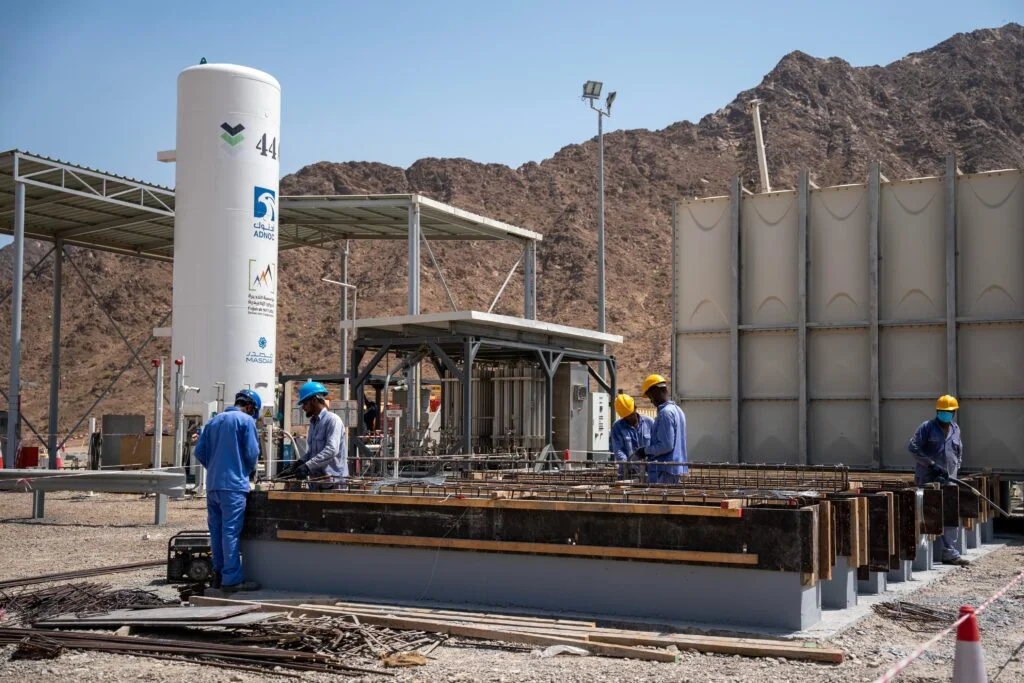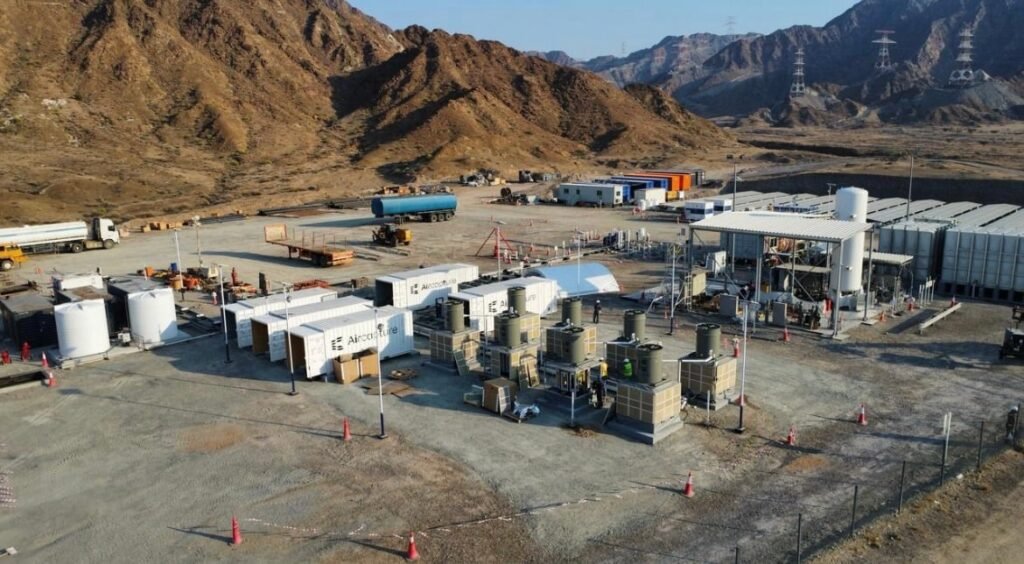The UAE has made a significant step towards combating climate change with the successful implementation of Project Hajar, which recently won the prestigious XPRIZE Carbon Award. The project focuses on Direct Air Capture (DAC) and storage technology, an innovative solution designed to reduce the amount of carbon dioxide in the atmosphere.
What is Direct Air Capture?
Direct Air Capture (DAC) is a groundbreaking technology that removes carbon dioxide (CO2) directly from the air. Unlike traditional methods, DAC does not rely on natural processes like forests or oceans to capture CO2. Instead, it uses machines to filter and capture the carbon from the atmosphere. Once captured, the carbon can either be stored underground or used for various purposes, including enhancing agricultural production or even creating fuel.
This technology has gained increasing attention in the global fight against climate change, as scientists believe that reducing atmospheric CO2 is essential to meeting the targets outlined in the Paris Agreement. While the technology is still in its early stages, many are hopeful that DAC can play a critical role in reducing global carbon emissions.

How Project Hajar is Changing the Game
Project Hajar stands out as one of the most ambitious and successful DAC initiatives to date. Located in the UAE, the project utilizes state-of-the-art equipment to capture CO2 from the air and store it deep underground in geological formations. This storage method ensures that the carbon remains safely sequestered for thousands of years, preventing it from contributing to global warming.

The project’s success was recognized when it earned the XPRIZE Carbon Award, a prestigious recognition for innovation in carbon removal technology. The award is given to projects that demonstrate significant advancements in combating climate change, and Project Hajar’s achievement marks a milestone in the UAE’s commitment to sustainability.

The Technology Behind Project Hajar
The technology behind Project Hajar involves large-scale machines designed to filter air, extract carbon, and then store it. The process begins with the collection of ambient air, which passes through a filter that binds the carbon dioxide. The CO2 is then isolated and compressed, after which it is transported to underground storage sites.
This process is not only environmentally friendly but also efficient. The amount of energy required to run the systems is balanced by the carbon captured, making the project not just sustainable but also scalable. Project Hajar’s success in the UAE demonstrates that DAC can be implemented in desert environments and harsh climates, opening up opportunities for similar projects worldwide.
Why Project Hajar Matters
The significance of Project Hajar cannot be overstated. By earning the XPRIZE Carbon Award, the project has demonstrated that carbon capture technologies are viable, scalable, and effective in reducing the global carbon footprint. The UAE’s investment in this technology reflects its broader goals of sustainability and innovation, positioning the country as a leader in global environmental efforts.
The success of Project Hajar also highlights the importance of public-private partnerships in driving technological advancements. With the backing of the UAE government and international research institutions, the project has garnered the necessary support to push the boundaries of what is possible in carbon capture.
Impact on the UAE and Global Climate Goals

For the UAE, Project Hajar represents a leap toward achieving its climate targets, which include reducing carbon emissions by 23.5% by 2030. The country has committed to becoming a leader in clean energy and environmental sustainability, and this project aligns perfectly with its long-term vision.
On a global scale, the successful implementation of Direct Air Capture technologies like Project Hajar is a step toward achieving net-zero emissions. The world is racing against time to limit global warming, and projects like these offer hope that large-scale solutions can be developed to tackle one of the most significant challenges facing humanity.
Looking Ahead: The Future of Carbon Capture
The future of Direct Air Capture technology looks promising. As more projects like Project Hajar emerge, the technology will continue to evolve, becoming more efficient and cost-effective. Researchers and environmentalists are optimistic that DAC could play a critical role in meeting global carbon reduction goals.
In addition to its environmental benefits, the growing industry around DAC could lead to new jobs and economic opportunities. The development, implementation, and maintenance of DAC technology will require a skilled workforce, contributing to job creation in the green energy sector.
As global demand for carbon capture and storage increases, the UAE’s role in advancing this technology is likely to grow, cementing its position as a leader in sustainability and environmental innovation.
Conclusion
Project Hajar’s win of the XPRIZE Carbon Award marks a major achievement for the UAE and the world. As the global community faces the pressing challenges of climate change, initiatives like Project Hajar provide hope for a future where carbon emissions are effectively managed and reduced. With continued investment and innovation, the UAE is paving the way for a cleaner, greener world.
The success of this project demonstrates that the future of climate action is not only possible but already unfolding, with technology like Direct Air Capture leading the charge. Project Hajar is proof that positive change is within reach, and the UAE is at the forefront of this critical movement.
Read More: Oman-UAE Rail Project Speeds Up with Key Construction Milestones














